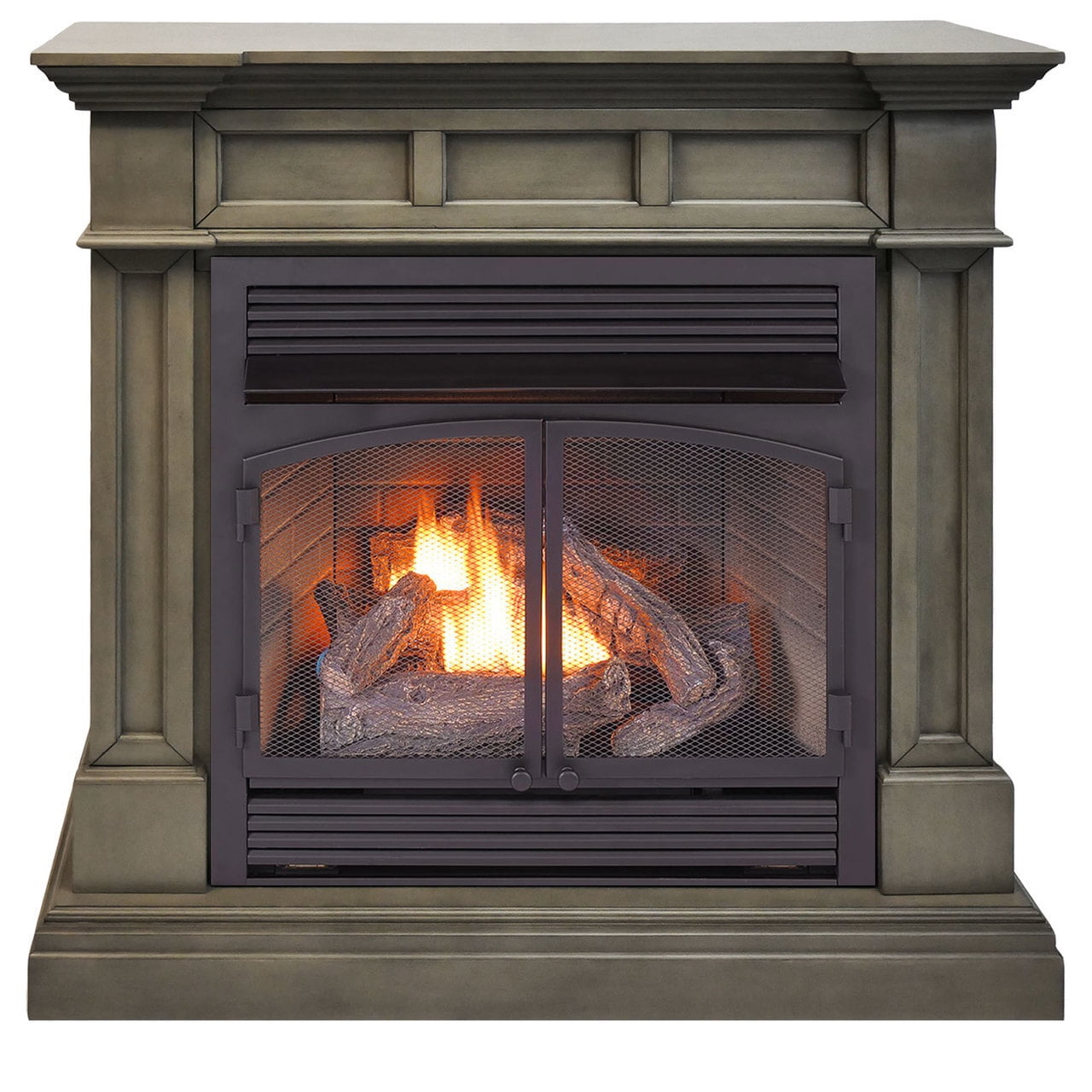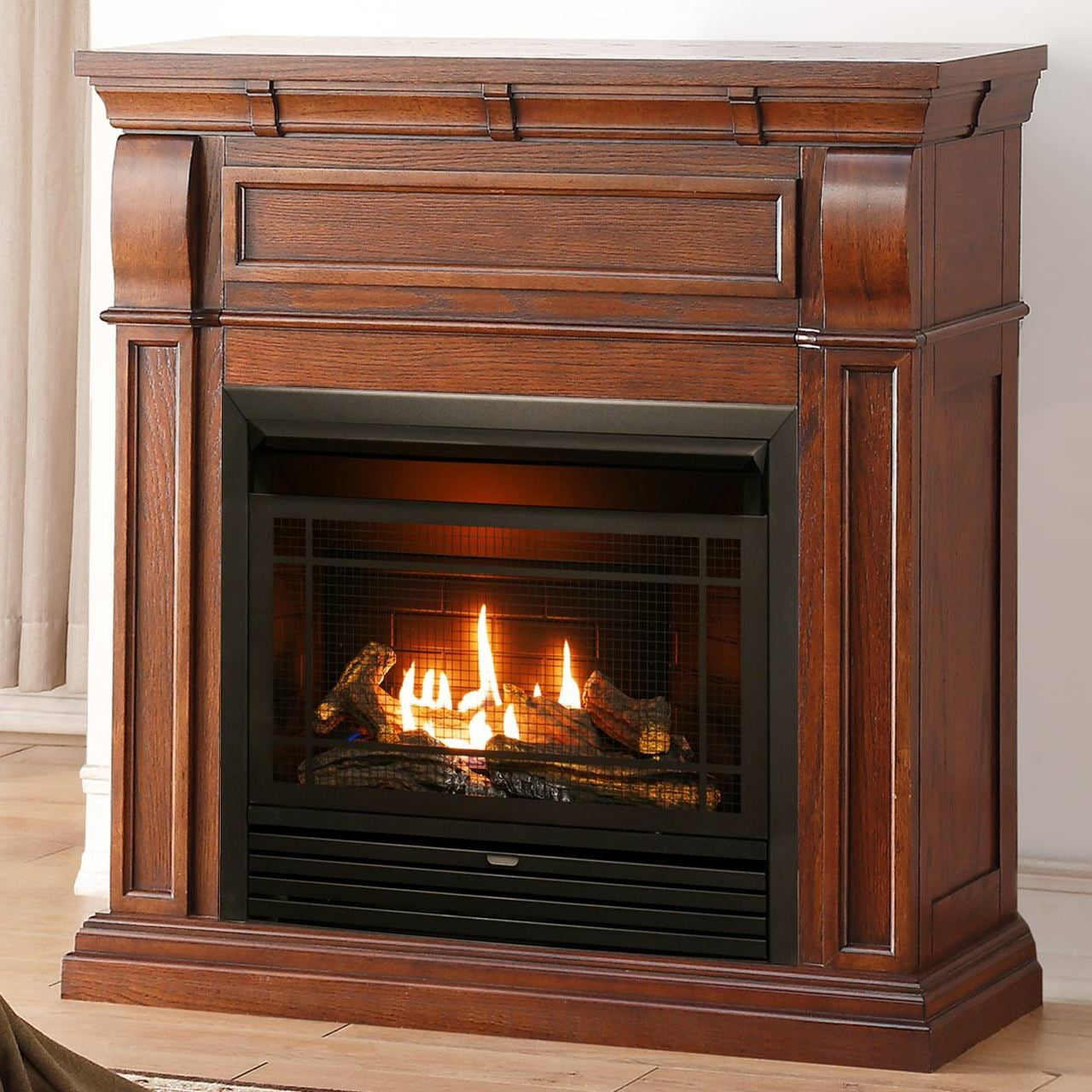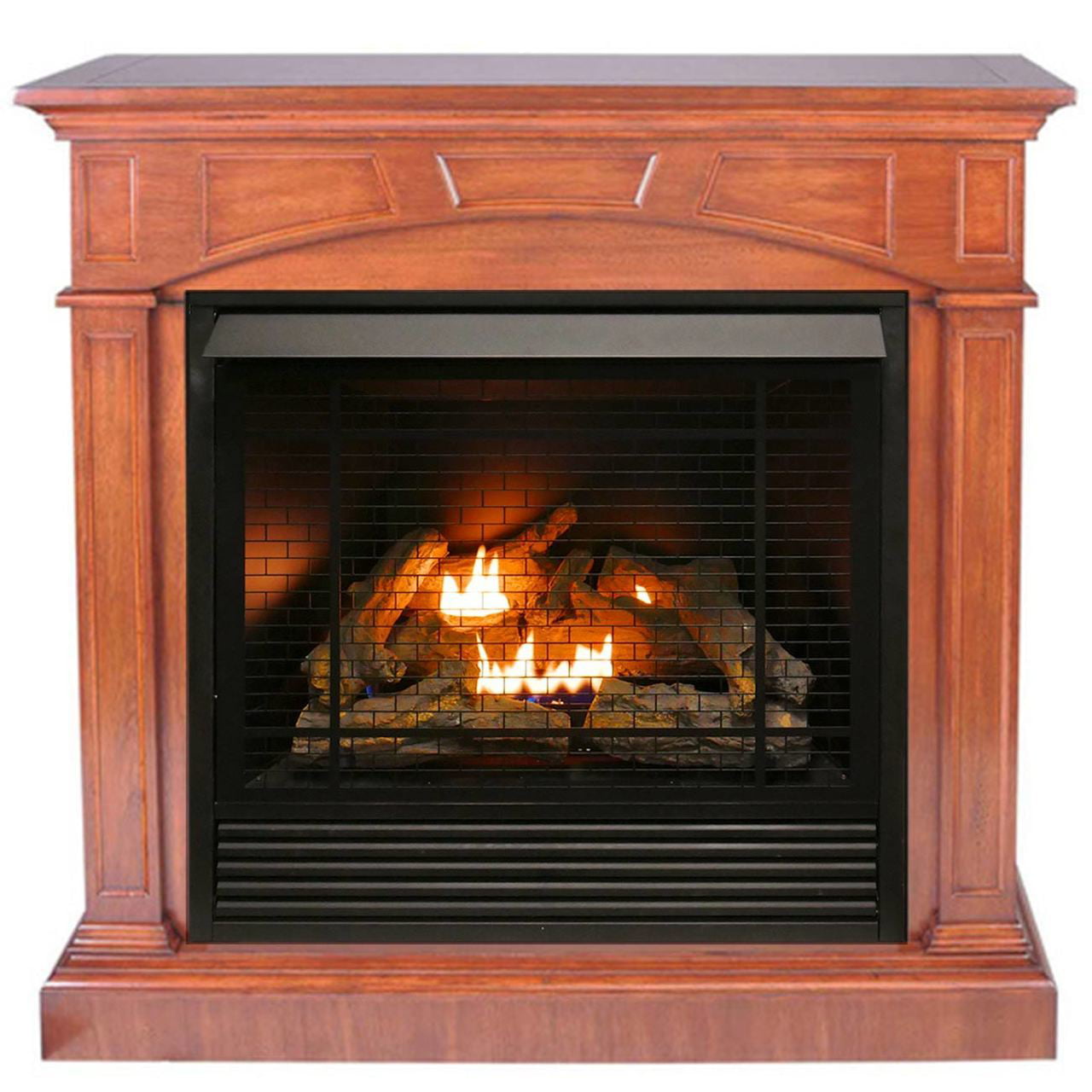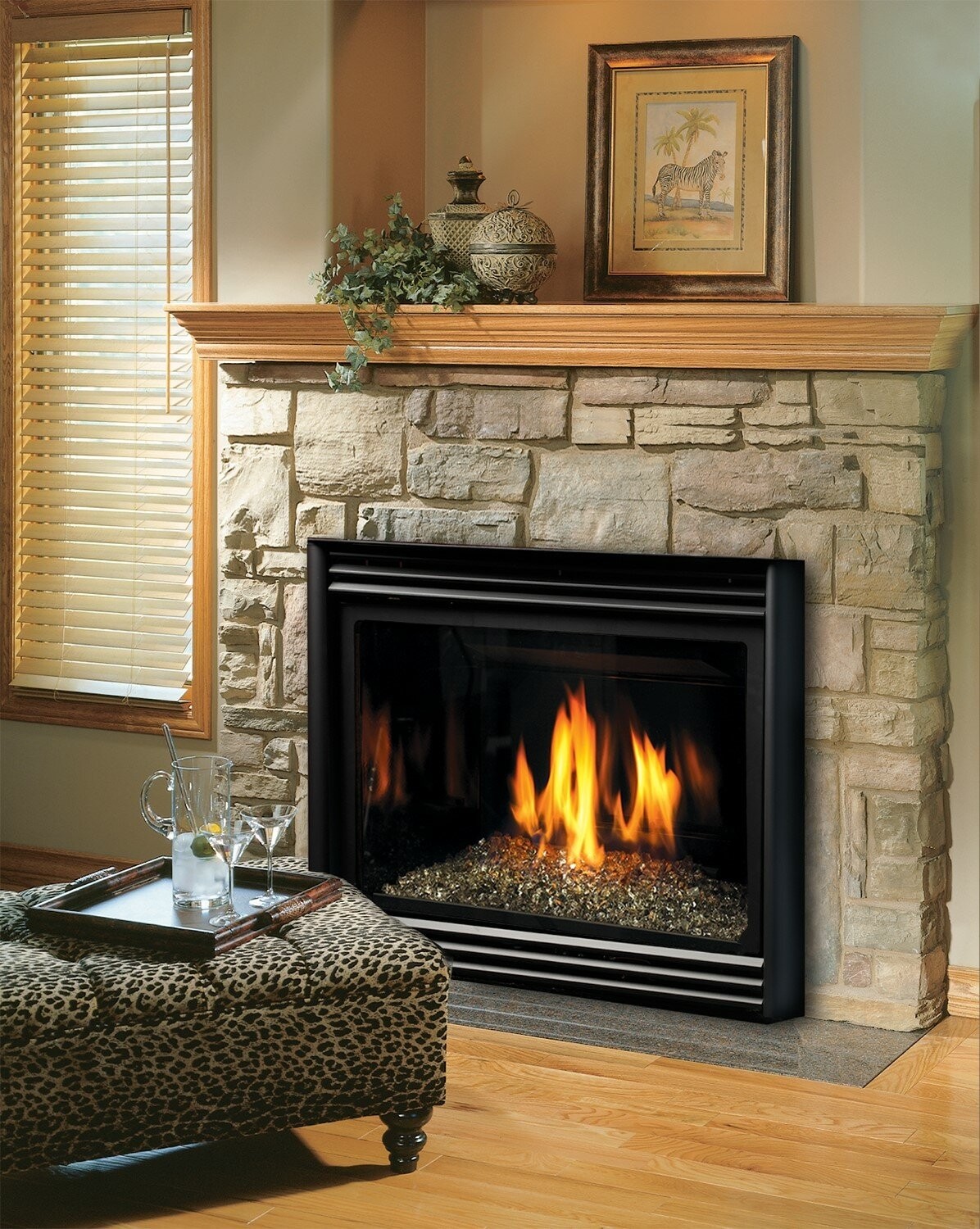Ventless Gas Fireplace Stoves
Ventless gas fireplace stoves have become increasingly popular due to their convenience, efficiency, and aesthetic appeal. They offer a hassle-free alternative to traditional wood-burning fireplaces, providing warmth without the need for a chimney or venting system. Whether you’re considering one for your home or simply curious about its benefits, this guide will walk you through everything you need to know.

What Are Ventless Gas Fireplace Stoves?
Ventless gas fireplace stoves are heating appliances that burn either natural gas or propane without requiring a chimney or vent to expel combustion byproducts. Unlike traditional fireplaces that need a flue or chimney to release smoke, ventless stoves are designed to burn gas efficiently, producing very little waste in the form of carbon dioxide and water vapor.
The technology behind ventless stoves ensures that nearly all of the heat generated stays within the room, making them highly efficient. While some may worry about indoor air quality, these stoves are equipped with oxygen depletion sensors (ODS) to shut off the stove if oxygen levels drop too low. This built-in safety feature adds a layer of protection for homeowners.
These stoves come in various styles, from traditional cast-iron designs to sleek, modern units, making them an appealing option for many homes. They can either be freestanding or wall-mounted, depending on the room’s layout and design.

Benefits of Ventless Gas Fireplace Stoves
One of the main benefits of ventless gas fireplace stoves is their ease of installation. Since there’s no need for a vent or chimney, these stoves can be installed in almost any room, even those that wouldn’t typically accommodate a fireplace. This flexibility makes them ideal for apartment dwellers, renters, or those looking to add supplemental heat to a home office or bedroom.
Energy efficiency is another significant advantage. Ventless stoves convert almost 100% of the gas they burn into heat, compared to vented systems that lose a portion of heat through the flue. This means you’ll enjoy a warmer room without the energy waste, which can translate into savings on your utility bills. Additionally, since they don’t require electricity, ventless gas stoves provide warmth during power outages, making them a reliable source of heat in emergencies.
Another benefit is the aesthetic appeal. Ventless gas fireplace stoves create the ambiance of a traditional fireplace, complete with dancing flames, but without the mess of ash or the hassle of chopping wood. This makes them a practical yet stylish addition to any home.

Safety Features and Considerations
While ventless gas fireplace stoves are designed with safety in mind, it’s essential to be aware of potential risks and safety features. The most important safety mechanism is the oxygen depletion sensor (ODS), which automatically turns off the stove if oxygen levels drop too low. This prevents the build-up of dangerous carbon monoxide in the home.
Another key safety feature is the burner design. Ventless stoves are engineered to burn gas cleanly and efficiently, producing minimal amounts of harmful gases. However, it’s still important to ensure that the room where the stove is installed has adequate ventilation, especially if it’s small or poorly ventilated.
It’s also worth considering the installation location. Most manufacturers recommend placing ventless stoves in rooms with at least one door or window that can be opened periodically to allow fresh air circulation. Additionally, regular maintenance and inspections are crucial to ensure that the stove operates safely and efficiently over time.

How to Choose the Right Ventless Gas Fireplace Stove for Your Home
When selecting a ventless gas fireplace stove, there are several factors to consider. First, think about the size of the space you want to heat. These stoves come in a variety of sizes, and choosing the right one depends on the square footage of the room. Smaller units are suitable for compact spaces like bedrooms, while larger models can heat bigger living rooms or open-concept areas.
Next, consider the type of fuel you’ll be using. Ventless stoves can run on either natural gas or propane, so you’ll need to choose a model that matches your home’s existing fuel supply. Some models can be converted from one fuel type to another, offering added flexibility. It’s also a good idea to look for stoves with adjustable flame settings, so you can control the level of heat and ambiance they provide.
Style is another important factor. Ventless stoves are available in a range of designs, from classic cast-iron stoves that evoke a rustic feel to contemporary units with sleek lines and modern finishes. Choosing a design that complements your home’s décor will ensure that your new stove not only provides warmth but also enhances the overall aesthetic of the room.

Installation and Maintenance Tips
Installing a ventless gas fireplace stove is generally straightforward, but it’s always best to consult a professional to ensure that the job is done safely and correctly. Since these stoves don’t require a chimney or flue, installation typically involves connecting the stove to your home’s gas line and positioning it in a suitable location. Some models may also require securing the stove to the floor or wall for added stability.
Once installed, ventless stoves require minimal maintenance. Since they don’t produce ash or soot, you won’t have to worry about cleaning out a firebox or sweeping a chimney. However, regular inspections are still necessary to ensure that the burner and safety features are functioning properly. It’s a good idea to have your stove checked by a professional once a year to prevent any issues from developing over time.
For day-to-day care, simply wiping down the exterior with a soft cloth will keep your stove looking its best. If your stove has a glass front, make sure to use a cleaner that’s safe for gas stoves to prevent streaks or residue buildup. Keeping your stove clean will ensure that it continues to operate efficiently and safely.

Common Misconceptions About Ventless Gas Fireplace Stoves
One common misconception about ventless gas fireplace stoves is that they’re unsafe due to the lack of a venting system. However, as long as they are installed and used according to the manufacturer’s guidelines, these stoves are safe. The inclusion of oxygen depletion sensors and other safety features minimizes the risk of carbon monoxide build-up, making them a viable option for home heating.
Another misconception is that ventless stoves don’t provide adequate heat. In reality, ventless stoves are highly efficient and can heat a room just as well as a traditional vented fireplace. They often outperform vented models in terms of energy efficiency because all the heat stays within the room rather than escaping through a chimney.
Finally, some people believe that ventless stoves will cause unpleasant odors or excessive moisture in the home. While it’s true that burning gas produces a small amount of moisture, the amount is negligible and won’t lead to mold or dampness if the stove is used correctly. As for odors, any unusual smells are typically a sign that the stove needs cleaning or that the wrong fuel is being used.

BARI DV 8180 Gas fire stove, Fireplace, Gas stove

Shop Ashley Hearth Products 1,000-sq ft Single-Burner Vent-Free Liquid Propane Gas Stove at

Ashley Hearth Products 1,000-sq ft Single-Burner Vent-Free Natural Gas Stove in the Gas Stoves

Lp Ventless Kamin #Kachelöfen Gas stove, Free standing gas stove, Stove

10 Best Gas Fireplaces for 2021 – Ideas on Foter

Related Posts:
- Gas Fireplace Knob
- Gas Fireplace Not Heating Room
- Gas Fireplace Pilot Light Out
- Gas Fireplace Trim Ideas
- Regency Gas Fireplace Prices
- Gas Fireplace on Interior Wall
- Gas Fireplace Replacement
- Fireplace Gas Leak
- Outdoor Gas Fireplace Insert Kits
- Gas Fireplace No Pilot Light
Ventless gas fireplace stoves have gained popularity in recent years as a convenient and efficient alternative to traditional wood-burning fireplaces. These stoves are designed to be used indoors without the need for a chimney or external venting system. They operate by burning natural gas or propane and can provide both warmth and ambiance to any room in your home. In this guide, we will explore the benefits, pros and cons, common mistakes to avoid, and answer frequently asked questions about ventless gas fireplace stoves.
Benefits of Ventless Gas Fireplace Stoves
One of the main benefits of a ventless gas fireplace stove is that it does not require a chimney or external venting system. This makes it easier and more cost-effective to install compared to traditional fireplaces. Ventless gas stoves also burn cleaner than wood-burning fireplaces, producing fewer emissions and pollutants. This can be especially beneficial for individuals with respiratory issues or allergies.
Another advantage of ventless gas fireplace stoves is their high efficiency. These stoves can heat a room quickly and evenly, providing a consistent source of warmth without the need for constant refueling like wood-burning fireplaces. Ventless gas stoves are also relatively low maintenance, requiring minimal cleaning and upkeep compared to traditional fireplaces.
Additionally, ventless gas fireplace stoves come in a variety of styles and sizes to suit different preferences and room sizes. Whether you prefer a modern or traditional look, there is likely a ventless gas stove that will complement your home decor. Some models even come with additional features such as remote control operation or adjustable heat settings.
Pros and Cons of Ventless Gas Fireplace Stoves
While ventless gas fireplace stoves offer many benefits, there are also some drawbacks to consider. One potential downside is the risk of indoor air quality issues. Because ventless gas stoves do not expel exhaust gases outside, there is a possibility that carbon monoxide or other harmful gases could build up in the room. It is important to ensure proper ventilation and have carbon monoxide detectors installed to mitigate this risk.
Another concern with ventless gas fireplace stoves is their reliance on natural gas or propane as fuel sources. While these fuels are generally safe when combusted properly, there is always a risk of leaks or malfunctions that could pose a danger to occupants. Regular maintenance and inspections are recommended to ensure the safe operation of the stove.
In terms of aesthetics, some people may prefer the crackling sounds and smoky scent of a traditional wood-burning fireplace over the clean burn of a ventless gas stove. Additionally, ventless gas stoves may not provide the same level of heat output as wood-burning fireplaces, depending on the size and design of the unit.
Common Mistakes to Avoid with Ventless Gas Fireplace Stoves
One common mistake to avoid when using a ventless gas fireplace stove is neglecting proper ventilation. Even though these stoves do not require a chimney, it is essential to have adequate airflow in the room to prevent the buildup of harmful gases like carbon monoxide. It is recommended to crack open a window slightly while using the stove to ensure proper ventilation.
Another mistake to avoid is failing to schedule regular maintenance checks for your ventless gas stove. Over time, dust and debris can accumulate inside the unit, affecting its efficiency and safety. It is important to have a professional inspect and clean your stove at least once a year to keep it running smoothly.
Using improper fuel sources or accessories can also lead to problems with your ventless gas fireplace stove. It is crucial to only use the recommended type of natural gas or propane fuel for your specific model of stove. Using incompatible fuel sources can cause malfunctions and safety hazards.
Can I install a ventless gas fireplace stove in my home if I already have central heating?
Yes, you can still install a ventless gas stove as a supplemental heating source in rooms where you want additional warmth or ambiance.
Are there any regulations or codes I need to follow when installing a ventless gas fireplace stove?
It is essential to check local building codes and regulations before installing a ventless gas stove in your home. Some areas may have restrictions on indoor burning appliances.
How do I maintain my ventless gas fireplace stove?
Regular maintenance includes cleaning the unit, checking for leaks, and ensuring proper ventilation. It is recommended to have a professional inspect your stove annually.
Are ventless gas fireplace stoves energy-efficient?
Ventless gas stoves are generally considered energy-efficient because they do not lose heat through a chimney or external venting system.
Can I use my ventless gas fireplace stove during power outages?
Because most ventless gas stoves do not rely on electricity for operation, they can still provide heat during power outages as long as you have fuel on hand.
Ventless gas fireplace stoves offer many benefits as an efficient and convenient heating option for indoor spaces. However, it is essential to weigh the pros and cons carefully before installing one in your home to ensure safe operation and optimal performance. By avoiding common mistakes and following proper maintenance guidelines, you can enjoy the warmth and ambiance provided by a ventless gas stove for years to come.
If you are considering purchasing a ventless gas fireplace stove, be sure to do your research and consult with a professional to determine if it is the right choice for your home. By understanding the benefits, pros and cons, common mistakes to avoid, and frequently asked questions, you can make an informed decision about whether a ventless gas stove is the right heating option for your needs.
Remember to prioritize safety and proper maintenance to ensure the efficient operation of your ventless gas fireplace stove. Overall, ventless gas fireplace stoves can be a great addition to any home, providing warmth and ambiance without the need for a chimney or external venting system. By understanding the benefits and drawbacks of these stoves, avoiding common mistakes, and following proper maintenance guidelines, you can safely enjoy the comfort they provide. If you have any questions or concerns about installing a ventless gas stove in your home, it is recommended to consult with a professional to ensure that it is the right choice for your specific needs.
With proper care and attention, a ventless gas fireplace stove can be a valuable and efficient heating option for your home. Overall, ventless gas fireplace stoves are a convenient and efficient heating option for indoor spaces. They offer benefits such as easy installation, clean burning, high efficiency, and a variety of styles to choose from. However, it is essential to consider the potential drawbacks, such as indoor air quality issues and reliance on fuel sources.
To ensure the safe operation of a ventless gas stove, it is important to avoid common mistakes such as neglecting ventilation, skipping maintenance checks, and using improper fuel sources. By following proper guidelines and consulting with a professional, you can enjoy the warmth and ambiance provided by a ventless gas fireplace stove in your home.
If you have any questions or concerns about installing a ventless gas stove, it is recommended to seek advice from a qualified professional. With proper care and attention, a ventless gas fireplace stove can be a valuable addition to your home heating options.